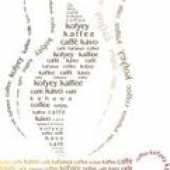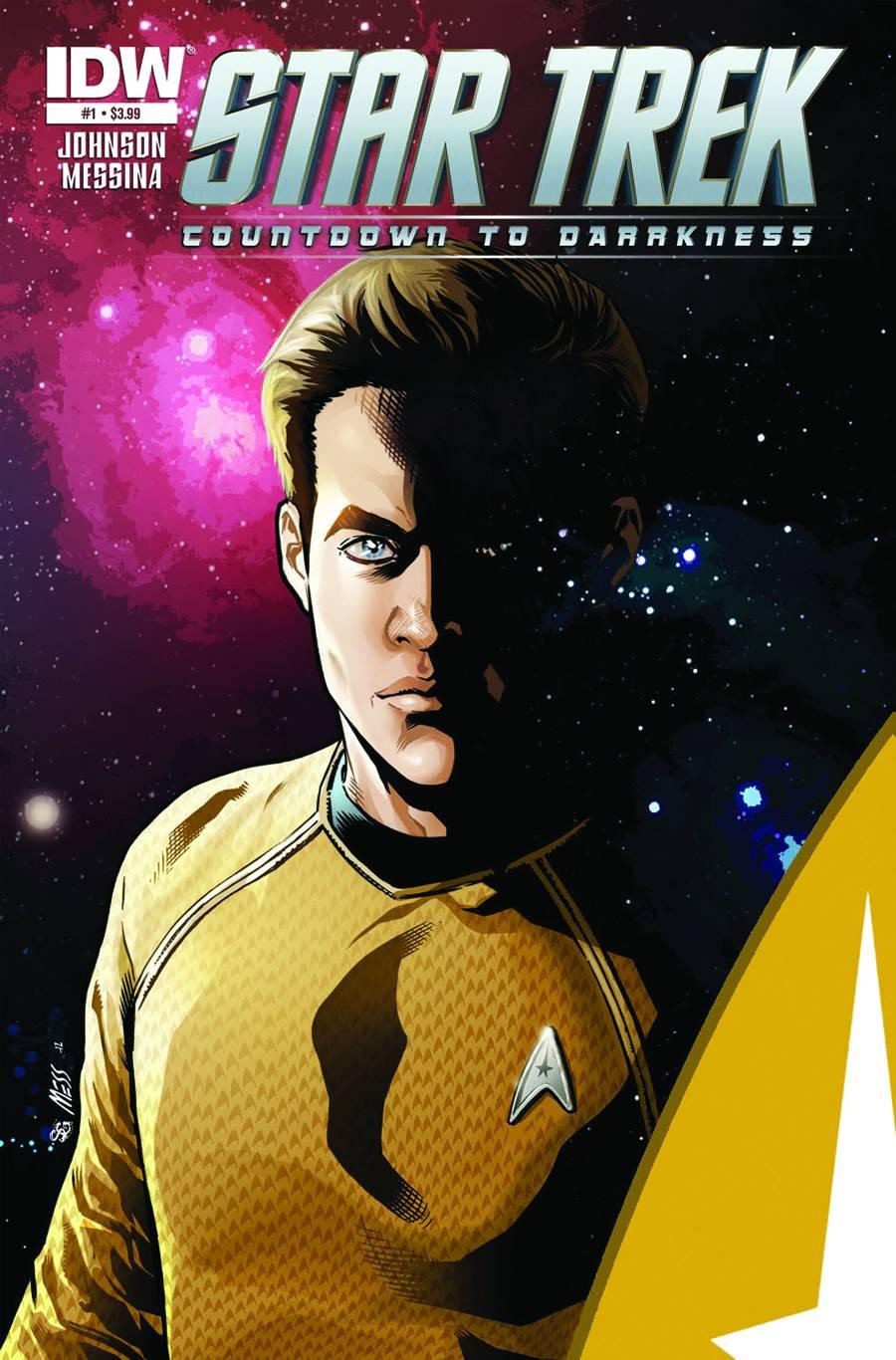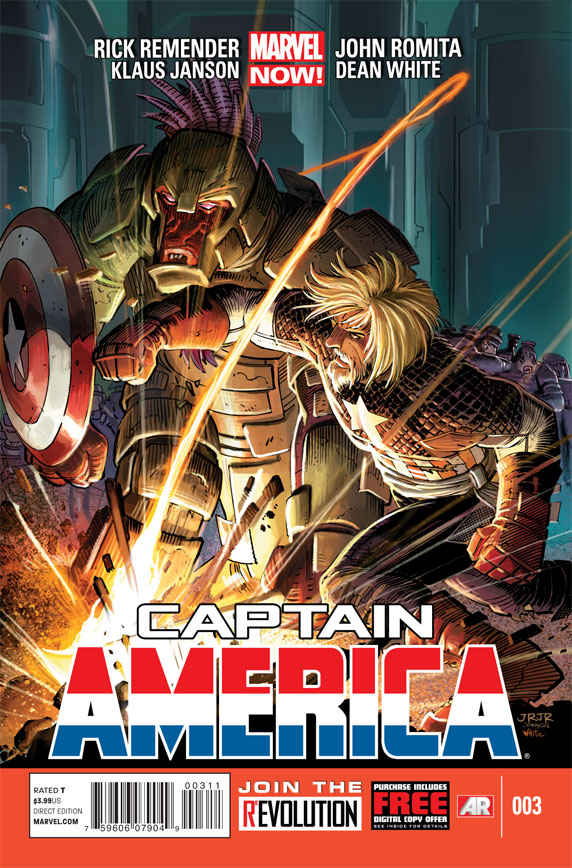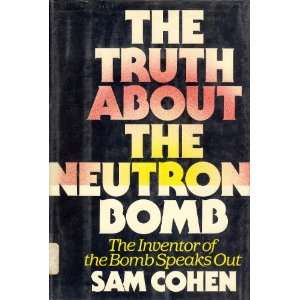Anti-Nuclear Arguments 2 - Uranium Mining.
I have covered uranium mining in previous posts and mentioned some of the protests and resistance actions against it. In this post, I am going to recap some of the issues with uranium mining.
The best deposits of uranium ore have only one percent uranium so a huge amount of ore must be mined in order to obtain a small amount of uranium. In the U.S., with a quarter of a percent uranium ore, a ton of ore needs to be dug up in order to get five pounds of uranium. If the mine is the open-pit variety, it is usually necessary to remove a surface layer to get to the uranium ore. The ore that is left after the uranium is removed is almost as radioactive as the uranium and should be isolated from the environment for hundreds of thousands of years in order not to be a health hazard.
Mining produces vast amounts of radioactive dust, much of which escapes the mining site, especially in open pit mines, and pollutes the environment. Mine workers are exposed to the dust even with protective clothing and dust masks.
Uranium decays in a complex process that goes through fourteen stages before it finally become non-radioactive lead. Radon gas is produced in during one of the decay steps and enters the atmosphere where it can travel for miles. Miners need to wear special gas masks in order to be protected from the radon gas.
One of the extraction processes is call leaching where the ore is piled in a trench and caustic toxic chemicals are poured over the ore. The uranium is leached from the ore and accumulated at the bottom of the trench. However, some of the leaching solution often escapes into the environment pollutes the soil, ground water and/or surface water. The fumes create air pollutions.
In another extraction process, the ore is finely ground to extract the uranium. Radioactive dust from the grinding process can escape and pollute air, water and soil near the extraction plants.
Uranium and other elements that are found in the ore are heavy metals. Even if not radioactive, these heavy metals escape into the environment and pollute the soil and water, posing a severe health hazard to humans, plants and animals.
Uranium mining is a very dirty process that pollutes the environment near the mine with radioactive dust, radon gas, heavy metal and toxic chemicals. There is really no efficient way to remove the pollution of uranium mining from the air, water and soil around the mine. The mines render the areas around them dangerous and useless for any other purpose. Over time, the pollution from a mine spreads beyond the local area over a much wider area.
When the cost of nuclear power is advertised by the nuclear industry, I don’t believe that they are including the environmental degradation and the health hazards from the mining of uranium.
Ranger Uranium Mine in Australia:
Reading Pile: 1/23/13
Uncanny X-Force #1- Sam Humphries has been proving himself on superhero titles with his Ultimates work, creating some interesting plots that are well supported by solid characterization. This is no different, and we also get a pretty well told Psylocke story to boot. Considering how messed up her continuity can be, that’s saying something. I always like Ron Garney artwork, and he delivers some solid layouts for the book. Overall, it’s nice to see a new direction book with an actual new direction that’s interesting and well told. Plus hey, if they are going to put Puck in the spotlight and make him a little hardcore that can only be amusing. A-
Colder #3- Juan Ferreyra draws some nasty monsters and nastier deaths. Hooray for violence! B+
Star Trek: Countdown To Darkness #1- Generally Star Trek comics aren't my cup of tea, but the last movie prequel comic was well done so I thought I would give this a chance. First of all, the abused over use of a lens flare effect in a comic is absolutely one of the funniest things I’ve seen. I’m not sure if that was intentional mockery or a heavy handed artistic direction choice, and while I hope it was the former I think the latter makes it even better in some odd way. As for the storytelling, it was fine but a little slow. I’m sure it will read stronger in a trade, so that might be the best way to pick up this run. B
Captain America #2 & 3- The Romita Jr artwork is sort of take/leave for most people, and while I don’t really care either way I do think it plays up the Kirby undertones very well. I’m still amused with the overall plot, and I like that Remender is playing with Arnim Zola. B+
Daredevil #22- 'Thank God for Stilt-Man' should be a band name. Also, I cannot emphasize how much I love Chris Samnee’s artwork, especially the fact that he makes Stilt-Man look pretty bad-ass. A-
Deadpool Killustrated #1- The previous Bunn Deadpool series didn’t do too much for me because it was a bit predictable, but this one picked up the pace and concept a bit better. The idea of Deadpool killing the literary archtypes that founded superheroes across the multiverse is actually a clever turn, although still just a different shade of gratuitous. At least they kept the price down though, so for the general Deadpool fan it’s not a bad read. B
Links for January 23, 2013
Extremely Radioactive Snow is seen in Fukushima! forbiddenknowledgetv.com
Radiation from the Fukushima Nuclear Plant disaster in Japan is now actively in the ecosystem all along the North American west coast. thelibertybeacon.com
Merging black holes could have radiated Earth during Middle Ages. ksl.com
U. S. Nuclear Regulatory Commission says that the last three Pilgrim Nuclear Power Station shutdowns were unrelated. wickedlocal.com
Nulcear Weapons 27 - The Neutron Bomb
I have done a whole series of posts on nuclear weapons but I have neglected one type that I mentioned in a recent post; the neutron bomb. One of the problems that I covered in that post was that nuclear weapons are so incredibly destructive that they destroy infrastructure in cities such as factories and equipment that might be useful to the attacker. The neutron bomb was dreamed up to help deal with this problem. The basic idea is to explode a nuclear device in the atmosphere that will not destroy all the buildings and equipment but that will create a sleet of neutrons that will kill all the people and animals in the area.
The neutron bomb was designed in 1958 at the Lawrence Livermore National Laboratory and tested underground in Nevada in 1963. The neutron bomb is also called the Enhanced Radiation Weapons (ERW). It is based on a hydrogen bomb that is designed to generate much higher levels of lethal radiation than conventional hydrogen bombs. The fast neutrons from such bombs could penetrate heavy shielding and cause maximum casualties. Although there is still a powerful destructive atomic explosion from such a bomb, its main use is for killing people.
In an ordinary hydrogen bomb, the casing is made from uranium or lead in order to absorb a great deal of the neutrons generated by the explosion. In a neutron bomb, the casing is made from chromium or nickel which do not absorb the fast neutrons generated. Around an ounce of tritium is also used in making neutron bombs. Neutron bombs release about fifty percent of their energy in a burst of radiation as compared to a five percent radiation release from a fission bomb of the same kiloton or megaton yield. The energy of the neutrons released by a neutron is about ten times that of the neutrons released by an equivalent fission bomb.
Neutron bombs were originally developed as tactical weapons. The United States feared a massive Soviet invasion of Europe and felt that neutron bombs could be usefully deployed on the battle field against the troops, tanks and other armored vehicles of a Soviet invasion without doing as much damage to the infrastructure of the invaded countries. Their destructive potential would be a deterrent against the Soviets who would be able to roll over conventional defending forces. The heat from the blast of a 1 kiloton neutron bomb would kill unshielded human beings out to about 1600 feet. Unprotected people would die in days from the radiation out to about 3000 feet and half the people within a 4500 foot radius would die within weeks. If a 1 kiloton bomb was exploded more than 1600 feet above the ground, infrastructure damage would be minimize while people would die in an approximately 4000 foot radius under the blast.
Neutron bombs were slated for deployment in Europe during the late 1970s. After a halt in development caused by protests, development was resumed under President Reagan. There was a brief deployment of a neutron warhead for the Sprint anti-missile system in 1975. Neutron warheads were also developed for short range tactical missiles and for artillery shells. President George H.W. Bush cancelled the neutron bomb program in 1992 but it took until 2003 for all the neutron warheads to be disassembled.
Neutron bombs are no longer considered to be more effective against tanks that any other explosive because modern tanks are heavily shielded and would not be affected by the radiation of a neutron bomb alone.
Regrettably, all our positions are filled at this time ... INFIELDERS
Infielders who were "under consideration" but didn't make it.
Kristian Brito, Age: 17, Pos: 1b
Plate Skills Index: -6 Production Index: 23 Composite Index: -83
Yes, Brito has negative stats. That's what you get when you strike out 32% of the time and walk 3% of the time and get only 4 extra-base hits. But he's 6-foot-5, 240 pounds at age 17, and most guys his age would have started in the Dominican for a softer landing.
| Year | Age | Tm | Lg | Lev | Aff | G | PA | AB | H | 2B | 3B | HR | RBI | SB | CS | BB | SO | ||||
|---|---|---|---|---|---|---|---|---|---|---|---|---|---|---|---|---|---|---|---|---|---|
| 2012 | 17 | Mariners | ARIZ | Rk | SEA | 29 | 115 | 109 | 21 | 1 | 2 | 1 | 12 | 2 | 1 | 4 | 37 | .193 | .226 | .266 | .492 |
| 1 Season | 29 | 115 | 109 | 21 | 1 | 2 | 1 | 12 | 2 | 1 | 4 | 37 | .193 | .226 | .266 | .492 | |||||
***
Filipe Burin, Age: 20, Pos: 2b/3b
Plate Skills Index: 103 Production Index: 59 Composite Index: 62
I got all amped up about Burin in 2011, when he was churning out doubles and walks, and barely striking out, in Venezuela. I started calling the Brazilian prospect "Ackley of Sao Paulo" (the "Ackley" part meant more back then, too), and he earned No. 39 in the original Talk40. He still has the Plate Skills, but his production dropped, and it looks like he's being moved off 2b. As a corner guy, he has a lot less appeal.
| Year | Age | Tm | Lg | Lev | Aff | G | PA | AB | H | 2B | 3B | HR | RBI | SB | CS | BB | SO | ||||
|---|---|---|---|---|---|---|---|---|---|---|---|---|---|---|---|---|---|---|---|---|---|
| 2009 | 17 | Mariners | VESL | FRk | SEA | 39 | 90 | 79 | 16 | 3 | 0 | 0 | 9 | 0 | 2 | 8 | 9 | .203 | .276 | .241 | .516 |
| 2010 | 18 | Mariners | VESL | FRk | SEA | 58 | 231 | 182 | 61 | 13 | 0 | 2 | 22 | 4 | 1 | 40 | 18 | .335 | .465 | .440 | .904 |
| 2011 | 19 | 2 Teams | 2 Lgs | Rk-FRk | SEA | 82 | 375 | 323 | 113 | 30 | 2 | 1 | 60 | 4 | 6 | 42 | 58 | .350 | .426 | .464 | .891 |
| 2012 | 20 | Pulaski | APPY | Rk | SEA | 43 | 174 | 145 | 31 | 4 | 1 | 0 | 17 | 2 | 0 | 23 | 29 | .214 | .320 | .255 | .575 |
| 4 Seasons | 222 | 870 | 729 | 221 | 50 | 3 | 3 | 108 | 10 | 9 | 113 | 114 | .303 | .400 | .392 | .792 | |||||
***
Mario Martinez, Age: 22, Pos: 3b
Plate Skills Index: 55 Production Index: 97 Composite Index: 52
You can't really keep a guy with a .203 ISO and a 19.7 K% out of the conversation, because I love guys who have power and keep their K% under 20%. But, when you factor in that it was all at High Desert, and he absolutely abhors walks, and is limited to a corner spot on defense, you understand why he's on this list.
| Year | Age | Tm | Lg | Lev | Aff | G | PA | AB | H | 2B | 3B | HR | RBI | SB | CS | BB | SO | ||||
|---|---|---|---|---|---|---|---|---|---|---|---|---|---|---|---|---|---|---|---|---|---|
| 2007 | 17 | Mariners | ARIZ | Rk | SEA | 53 | 209 | 196 | 55 | 9 | 1 | 1 | 26 | 3 | 2 | 6 | 31 | .281 | .311 | .352 | .663 |
| 2008 | 18 | Pulaski | APPY | Rk | SEA | 64 | 270 | 251 | 80 | 15 | 3 | 5 | 32 | 2 | 2 | 10 | 47 | .319 | .344 | .462 | .807 |
| 2009 | 19 | 2 Teams | 2 Lgs | A--A | SEA | 132 | 570 | 531 | 142 | 33 | 7 | 5 | 57 | 5 | 0 | 22 | 110 | .267 | .307 | .384 | .691 |
| 2010 | 20 | Clinton | MIDW | A | SEA | 118 | 469 | 440 | 105 | 22 | 3 | 12 | 66 | 4 | 1 | 17 | 114 | .239 | .270 | .384 | .654 |
| 2011 | 21 | High Desert | CALL | A+ | SEA | 109 | 466 | 432 | 120 | 22 | 3 | 11 | 56 | 2 | 1 | 19 | 137 | .278 | .313 | .419 | .731 |
| 2012 | 22 | High Desert | CALL | A+ | SEA | 120 | 492 | 467 | 132 | 24 | 4 | 21 | 80 | 3 | 3 | 13 | 97 | .283 | .308 | .486 | .794 |
| 6 Seasons | 596 | 2476 | 2317 | 634 | 125 | 21 | 55 | 317 | 19 | 9 | 87 | 536 | .274 | .305 | .417 | .722 | |||||
***
Martin Peguero, Age: 18, Pos: 2b/SS/3b
Plate Skills Index: 60 Production Index: 69 Composite Index: 29
Martin Esteilon Peguero got a huge bonus, which was later mysteriously reduced, got a ton of publicity, got a few top-10-in-the-system rankings based mostly on the hype, and, after a decent age-17 season, ended up at No. 33 in last year's Talk40. Then he went in reverse in 2012, moving mostly off shortstop, and dropping below .300 SLG and below .100 ISO. He could still recover, but he's got to put himself back on the radar.
| Year | Age | Tm | Lg | Lev | Aff | G | PA | AB | H | 2B | 3B | HR | RBI | SB | CS | BB | SO | ||||
|---|---|---|---|---|---|---|---|---|---|---|---|---|---|---|---|---|---|---|---|---|---|
| 2011 | 17 | Mariners | ARIZ | Rk | SEA | 43 | 176 | 165 | 46 | 12 | 1 | 1 | 25 | 17 | 5 | 6 | 22 | .279 | .309 | .382 | .690 |
| 2012 | 18 | Pulaski | APPY | Rk | SEA | 60 | 256 | 238 | 55 | 11 | 2 | 0 | 24 | 3 | 1 | 12 | 32 | .231 | .269 | .294 | .563 |
| 2 Seasons | 103 | 432 | 403 | 101 | 23 | 3 | 1 | 49 | 20 | 6 | 18 | 54 | .251 | .285 | .330 | .615 | |||||
***
Mickey Wiswall, Age: 23, Pos: 1b
Plate Skills Index: 73 Production Index: 104 Composite Index: 77
There's a lot to like about Wiswall -- who was part of the 26intheMix last year -- just not enough to keep him near the top of the prospect list. He got a power spike, but it coincided with playing in High Desert and being old-ish for the level. And he's pretty much limited to 1b, though he has played a sprinkling of games in the outfield. He just doesn't look like he'll have enough juice to get to the finish line as a corner guy.
| Year | Age | Tm | Lg | Lev | Aff | G | PA | AB | H | 2B | 3B | HR | RBI | SB | CS | BB | SO | ||||
|---|---|---|---|---|---|---|---|---|---|---|---|---|---|---|---|---|---|---|---|---|---|
| 2010 | 21 | 2 Teams | 2 Lgs | A-A- | SEA | 45 | 197 | 184 | 54 | 17 | 0 | 9 | 35 | 1 | 0 | 8 | 45 | .293 | .330 | .533 | .863 |
| 2011 | 22 | Clinton | MIDW | A | SEA | 130 | 546 | 509 | 122 | 19 | 1 | 10 | 57 | 4 | 4 | 25 | 104 | .240 | .281 | .340 | .621 |
| 2012 | 23 | High Desert | CALL | A+ | SEA | 123 | 535 | 497 | 139 | 33 | 4 | 21 | 98 | 8 | 6 | 31 | 115 | .280 | .325 | .489 | .814 |
| 3 Seasons | 298 | 1278 | 1190 | 315 | 69 | 5 | 40 | 190 | 13 | 10 | 64 | 264 | .265 | .307 | .432 | .739 | |||||
Island running at Pulau Samosir
For those looking for beautiful scenery, a temperate climate and miles of open road and dirt to run on, a great place to look is Pulau Samosir in Indonesia. Pulau Samosir is a volcanic island located in Lake Toba in the western portion of the Indonesian island of Sumatra. It is located 1,000 m above sea level, and offers a picturesque lake vacation for lucky visitors.
Most travelers start out their adventure in a small inlay known as Tuk Tuk. This area is littered with guesthouses and hotels, and boasts some beautiful landscape on the lake. For myself personally, I stayed just north of Tuk Tuk, starting out my run on a downhill slope. Heading south from my hotel, my run started with beautiful views of the foothills in the middle of the island. The green, dense, jungle was accentuated by the steep incline of the hills, and was only broken by small brown rock faces, and steep, yet emaciated, waterfalls. The road was a mix of concrete and dirt, and as much as I would have loved to enjoy the view, footing was a bit dicey.
After passing through the town of Tuk Tuk, the view down the road opens up to a magnificent sight. With the foothills still standing guard to my right, the view down the rest of the island became clear, with a panoramic look at Lake Toba and mainland Sumatra now running alongside on the left. Immediately after leaving Tuk Tuk, two more waterfalls become evident in the foothills, and before reaching the town of Tomok (which is the only damper of the run) a small, aging fair adds an array of colors to the already grasping view.
After running through Tomok, the road starts to become less concrete and more dirt, and with a few hundred more meters, begins to wind up into the foothills and opens up even more beautiful views of the lake. Unfortunately for me, after about four miles out, I was beat, and needed to start making my way back to my guesthouse for a cool down in the lake.
All together, to go out and back past Tomok and up into the winding roads of the south, it ends up being around a 10-mile run. For those able to go further, a long out and back run (15 miles or more) introduces you to the most breath taking views the island has to offer. The path becomes much softer, and along with a Highway 1-esque view to the left, the foothills become meshed with seemingly endless rice paddies and beautiful forest. If you are planning a long run while visiting Indonesia, make sure to do it on the southern side of Pulau Samosir in Sumatra.
Geniuses SHOULD See Things the Rest of Us Don't
.
Kelly Gaffney sez,
.
.
What I find most compelling about the (Jaso) trade is that I never would have done the trade, but compelled to think about it, I have now concluded it was the right move. Most criticisms seem to view it as a failure of old school color by numbers thinking. I think it reflects Z's confidence that -- since he has been given the time to build organizational depth -- he can always fill the back end of the roster with capable role players. If the M's saw Jaso as a catcher, rather than a platoon DH, he'd still be on the team.
.
=== Geniuses SHOULD See Things the Rest of Us Don't ... ===
... As Bill James put it about Whitey Herzog (?) one time.
For me as a fan, that is a minimum standard of competence for a quality GM, that he make some decisions that I don't like, and that the GM turns out to be right. I don't resent the idea that a GM might understand things that I don't; for me that is one of the joys of sports, being surprised by Russell Wilson's skill set.
Has Jack Zduriencik done things that, in retrospect, were well ahead of my own perception at the time? We're not talking about Z anticipating a development that I didn't have information towards. We're talking about his making a decision that, after reflection, given time to think about it, I still thought was wrong.
You might like some or all or none of these suggestions:
- Danny Hultzen is in this category for me. About three days after the trade, SSI managed to publish a Cole Hamels / Johann Santana template to recover a few hit points, but still. We all howled with outrage the day of the trade, at least.
- Nick Franklin, certainly. Maybe Gordon can claim that he was up to speed on the day of the draft. Most people can't. I can't.
- Brendan Ryan maybe? There have been extended periods of time, during Ryan's tenure, when I thought it was pretty clear that Ryan was costing more with the bat than he was giving back with the glove. But he's given us 4-5 WAR in his two years and last year I came to perceive that Ryan's play-in-the-hole was an 80 skill. A skill that wins baseball games all by itself. At the moment, I have an inkling that really we just need to fix the other 8 slots in the lineup and stop blaming our glove wizard.
- The fast-tracking of Kyle Seager was very impressive. Did you see any particular reason to single this kid out and race him through the minors to Safeco?
- Possibly the M's saw Pineda's injury on the horizon. I felt terrible, terrible, terrible no matter who the M's got back; Pineda was my emotional salve against the old Randy Johnson wound. But Pineda went to camp injured and the Yankees darkly insinuated that Zduriencik played them. The local "genius" might have understood that the injury risk factor was more like 60% than it was like 10%. Of course, we already knew that Taro was a genius; he never loses a roto league.
- The trade for Jason Vargas and Mike Carp was stunningly insightful. Some blogs -- not mine -- have the right to claim that they were in step with Zduriencik on Franklin Gutierrez in that deal. (Asterisk here; possibly Vargas is just spaghetti-against-the-wall in view of Luke French and co. But Vargas and Carp had special makeup, so I dunno.)
- Zduriencik's decision to hire Eric Wedge might have been over my pay grade. Wedge is MUCH better than I gave him credit for; the "blown quality start" has been no issue at all, and he's the rare hard-case who can instill discipline without drawing a mutiny.
- The deal for John Jaso ... if you go back and Google SSI, you'll find that I thought his swing looked very static back in 2011. When he became our best player in 2012, it was something we fans didn't see coming. At all.
- The Wilhelmsen and Delabar stories were pretty freaky.
- Moving Ackley to second base goes here for anybody who didn't think Ackley could play there, though this wasn't "genius" vis-a-vis SSI. It was a good amount of GUTS.
- ... fill in your own.
You might say, well, he sure fouled up the Fister deal though, didn't he?! We are not arguing that Jack Zduriencik is great, that he's above average, or that he's below average. We are arguing that he often sees things we don't. I liked Bill Bavasi, but how many things could you put in such a list for him?
I'm not talking about, you roll some dice, you hit your 7's on a Russell Branyan here, you crap out on a Hector Noesi there. The above decisions don't look like dice rolls to me; they look like a shot-caller knowing more about baseball than I did. Maybe you could put the Jaso deal in the luck category, or maybe not. What do you think?
Neither are we talking about Zduriencik having had Russell Branyan in Milwaukee, and understanding that Branyan's plate coverage was better than most people thought. We're not talking about bringing in a Mike Sweeney and having it work out extremely well. That isn't brilliant enough to hit the standard we're proposing here.
A General Manager HAS to hit this standard in my view, or I as a fan withdraw my support for him as a decisionmaker.....
.................
Right now we are hoping that the new #3-4 hitters, and the shifts of the kids into the bottom of the order, go into that category for some people around the blog-o-sphere.
.................
Zduriencik has lost a lot of games.
And I don't believe in excuses, usually, but I think he's hit a whale of a lot of bad luck so far with his Ackleys, Smoaks, and Gutierrezes. Man. You go out and trade for the three best hitting prospects in baseball* and you get absolutely zero. Imagine if you got a GM job, and now imagine if your big moves turned out to be spit.
And you deal for Cliff Lee, and Justin Upton, and slam contracts for Prince Fielder and for Josh Hamilton... none of whom become Ryan Braun for you. if I had no bad luck, I'd have no luck at allllll...
As an observer, you gotta figure all it takes is for a bounce of the ball to go their way for once't. Who knows. Maybe a #3-4 hitter set, the kids come through, and the Young Guns give you Pineda seasons. I've seen franchise momentum change in sports, gentlemen, and change based on catching a break or two. Just saw it with the Seahawks.
.
You CAN quit smoking!
We're heading toward the end of January, when many people are starting to lose the resolve they had to change their lives starting on the first of the year. I know a lot of people resolve to quit smoking. I sure did. Over and over again.
- Nicotine patches
- Nicotine gum
- Cold turkey
- Nicotine patches again
- Cutting back gradually
- Only smoking one cigarette out of a pack and then throwing the entire rest of the pack away so that my boyfriend at the time (who thought I had quit) wouldn't find out, and hating myself a lot.
Medicinal cannibalism: The cure for what ails you
There aren't many taboos that you could truly consider global, but cannibalism is one of them. Thus it is perhaps not surprising that the act of violating the taboo is often considered to be an extremely powerful one. Any decent magic (or psychology) textbook will tell you, the bigger the taboo, the more power it holds.














